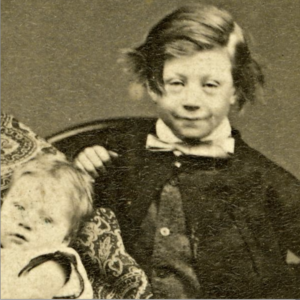Boxing Day, the day immediately after Christmas was so named because of the tradition started by the Romans of opening the church alms boxes and giving the contents to the poor. It is also the day of the feast of St Stephen.
The Australian tradition of Boxing Day came from British origins. In the eighteenth century employers gave to their employees the boxes filled with tips supplied by happy customers throughout the year. This bonus must have been welcome for those who worked for long hours without a break. Australian working conditions were generally based on traditions formulated in Britain.
Three great reports on the working classes in Britain shed some light on the working conditions. These were Sadler’s Report, Ashley’s Mines Commission and Chadwick’s Report on Sanitary Conditions. The immediate effect of Sadler’s Report, for example, was the Act of 1833 limiting hours of employment for women and children in textile work. Previously many women and children worked 16 hours per day with little time for rest periods.
It was thought admirable, in some places in Britain that nobody over the age of four years was without work. A Royal Commission established by the Whig government recommended in 1833 that children aged 11-18 be permitted to work a maximum of 12 hours per day; children 9-11 were allowed to work 8 hour days; and children under 9 were no longer permitted to work at all (children as young as 3 had been put to work previously). This applied only to the textile industry and not to occupations such as chimney sweeping, the shipyards or match factories whose conditions were worse.
Mr Matthew Crabtree was called in and examined during the Sadler Report. His evidence can be found in the British Parliamentary Papers of 1831-32. His testament showed the horror and exploitation of child labour similar to many of Charles Dickens’ stories.
What age are you? — Twenty-two.
What is your occupation? — A blanket manufacturer.
Have you ever been employed in a factory? — Yes.
At what age did you first go to work in one? — Eight.
How long did you continue in that occupation? — Four years.
Will you state the hours of labour at the period when you first went to the factory, in ordinary times? — From 6 in the morning to 8 at night.
Fourteen hours? — Yes.
With what intervals for refreshment and rest? — An hour at noon.
When trade was brisk what were your hours? — From 5 in the morning to 9 in the evening.
Sixteen hours? — Yes.
With what intervals at dinner? — An hour.
How far did you live from the mill? — About two miles.
Was there any time allowed for you to get your breakfast in the mill? — No.
Did you take it before you left your home? — Generally.
During those long hours of labour could you be punctual; how did you awake? — I seldom did awake spontaneously; I was most generally awoke or lifted out of bed, sometimes asleep, by my parents.
Were you always in time? — No.
What was the consequence if you had been too late? — I was most commonly beaten.
Severely? — Very severely, I thought.
In those mills is chastisement towards the latter part of the day going on perpetually? — Perpetually.
So that you can hardly be in a mill without hearing constant crying? — Never an hour, I believe.
Do you think that if the overlooker were naturally a humane person it would still be found necessary for him to beat the children, in order to keep up their attention and vigilance at the termination of those extraordinary days of labour? — Yes; the machine turns off a regular quantity of cardings, and of course, they must keep as regularly to their work the whole of the day; they must keep with the machine, and therefore however humane the slubber may be, as he must keep up with the machine or be found fault with, he spurs the children to keep up also by various means but that which he commonly resorts to is to strap them when they become drowsy.
At the time when you were beaten for not keeping up with your work, were you anxious to have done it if you possibly could? — Yes; the dread of being beaten if we could not keep up with our work was a sufficient impulse to keep us to it if we could.
When you got home at night after this labour, did you feel much fatigued? — Very much so.
Had you any time to be with your parents, and to receive instruction from them? — No.
The evidence of Matthew Crabtree was similar to that of many British working class people and reflected the lives endured by many immigrants to Australia. Around the 1830s a 10 hour day was demanded in Britain. An Act in 1847 limited both adults and children to 10 hours of work daily. Many immigrants who came to Australia in the 1850s from England escaped the daily grind of the factories and workhouses. Opportunities existed in Australia that would have been unthinkable in England. There was even the chance that a worker could become his own boss! This dream was realised by quite a few business people whose names are now synonymous with success. Some began their dynasties in Ballarat, and include Sutton’s (Brash Sutton’s – Allan’s Music Store), Ballarat Brewing Co (Carlton and United), and Holst (stockbrokers).
